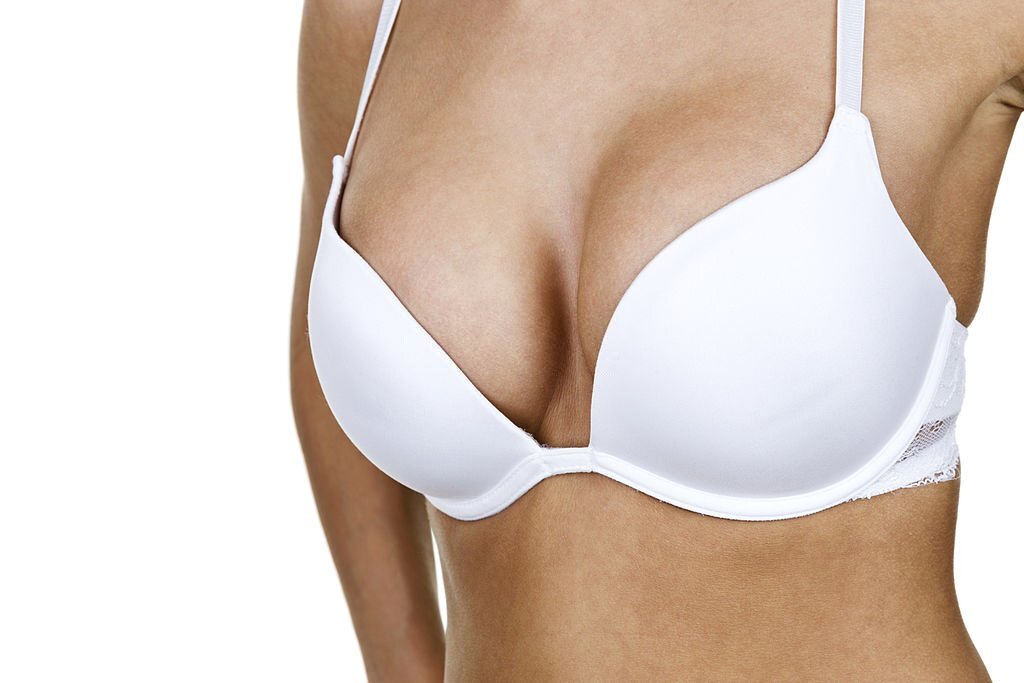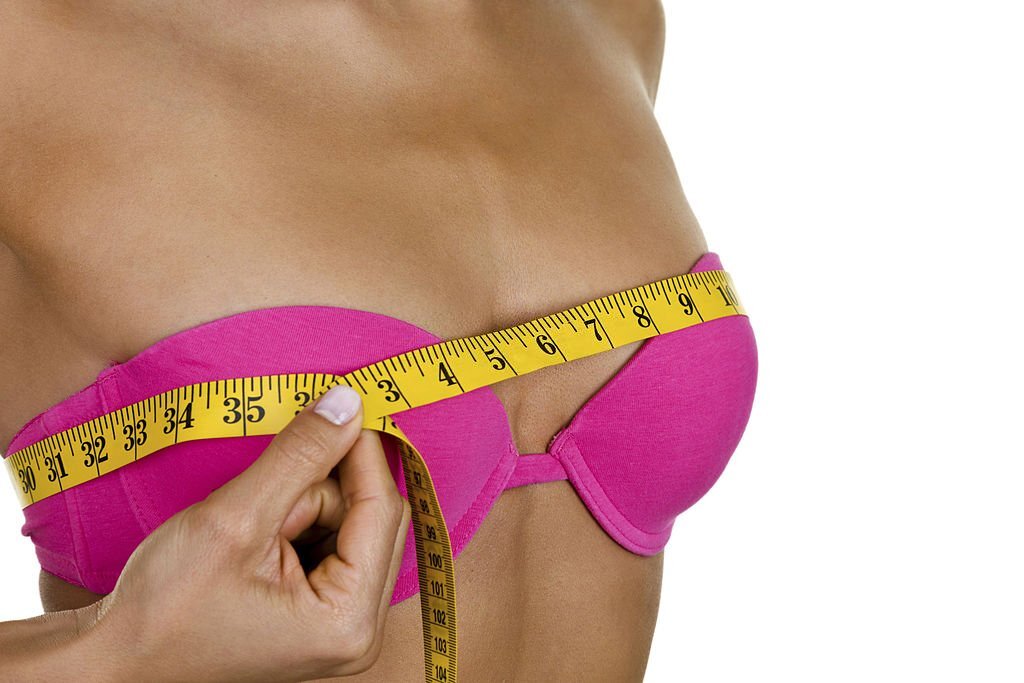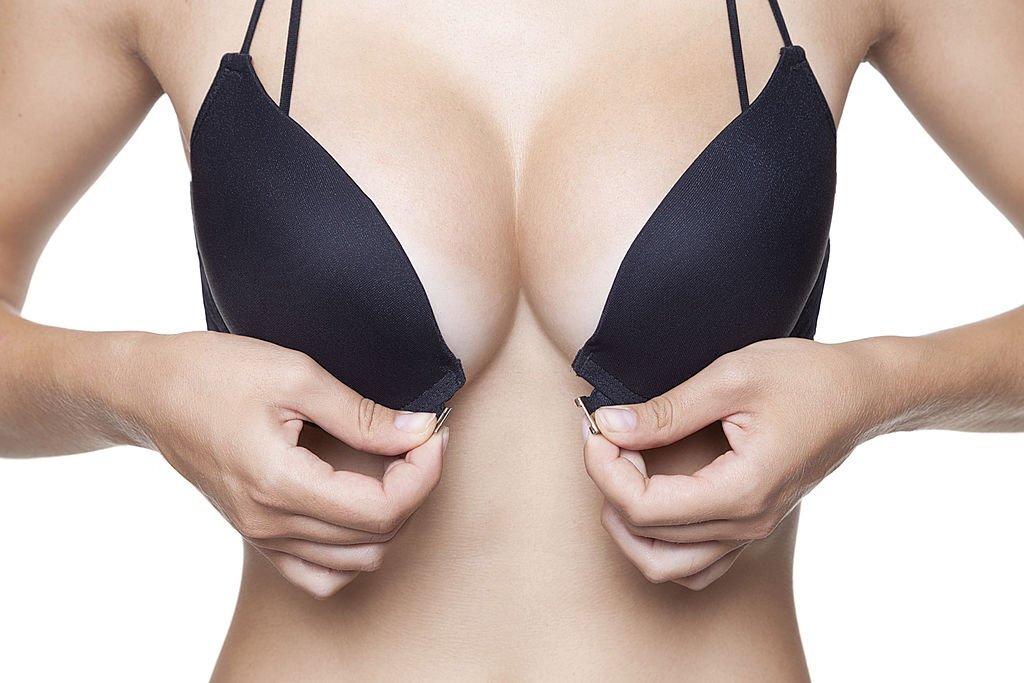Breast Augmentation
What is breast augmentation?
Breast augmentation (breast enlargement, augmentation mammoplasty, “boob job”) is a cosmetic surgery procedure enhancing breast size and shape.
It is one of the most commonly performed plastic surgery procedures and is aimed at achieving a more youthful, attractive, and proportionate appearance.
In this guide, we will provide you with a comprehensive understanding of breast augmentation, including its benefits, risks, and preparation.
Benefits of Breast Augmentation

Breast augmentation offers several benefits, including:
- Increasing breast size
- Improving breast shape
- Improving breast symmetry
- Enhancing self-confidence and self-esteem
Breast augmentation options vary but typically require breast implants. Implants come in a range of diameters, volumes, and projections. Implants are filled with either silicone gel or saline (saltwater), are inserted via an incision around the nipples (periareolar), under the breasts (inframammary fold), or armpit (transaxillary), and placed under or over the pectoral muscle.
Breast fat transfer is another augmentation procedure, in which your surgeon removes
excess fat from your belly or thighs via liposuction and injects it into the breasts. Fat transfers are sometimes paired with implants, allowing the implant to sit naturally. If sagging breasts are a concern, implants may be paired with a breast lift, elevating the breasts and raising the nipple for a perkier look.
Why Travel Abroad for a breast augmentation?

Getting a breast augmentation abroad is just as safe as undergoing the same treatment back home if you select a reputable surgeon. HebeDoc makes the entire process easier–listing only surgeons who meet a specific set of criteria.
The cost of breast augmentation varies greatly depending on the location.
Breast augmentation Prices in the United States
In the United States, the average cost of breast augmentation is between $15,000 and $25,000. This price range includes the cost of the surgery, anesthesia, and all necessary follow-up appointments. However, costs vary depending on the surgeon you choose and the facility where it’s performed.
Considering a breast augmentation? It’s essential to choose a qualified and experienced plastic surgeon who can help you achieve your desired results.
Interested in saving money on your Breast augmentation? Consider traveling to a destination where cosmetic surgeons hold deep expertise yet the procedure is considerably less expensive. Many women travel to Turkey to receive quality cosmetic surgery at a fraction of the cost.
Pros and cons of breast augmentation

Pros
- Breast augmentation is one of the most popular plastic surgery procedures.
- Breasts are larger, higher, and fuller.
- Youthful look.
- Boost self-confidence.
- Highly customizable; size, shape to fit body type, lifestyle.
- Results typically last well beyond 10 years.
Cons
- Pregnancy, menopause, and weight loss after surgery will affect results.
- You will eventually need to have implants replaced.
Breast augmentation cost

- USA average cost:$5,000- $10,000
- Turkey average cost: $2,000- $4,000
Factors affect cost:
- Augmentation type
- Plastic surgeon’s experience
- Location, where surgery is performed.
- Doctor administering the anesthesia.
Preparation

Your surgeon starts by listening to your goals and health history. Choosing a board-certified plastic surgeon, specializing in breast surgery will ensure that you’re in the safest, most experienced hands.
Your surgeon will perform a physical exam, which includes taking measurements of the chest wall and breasts. Many surgeons offer 3D imaging, so you can virtually see the results of different implant sizes and projections. Surgery recommendations (incision, locations), understanding of risks, and recovery process and timeline will all be addressed by your doctor.
A pre-surgery mammogram, particularly if you are over the age of 50 is also offered. Your surgeon will help you determine the best size, type, incision location, and placement for your body and desired outcome.
87% of implant surgeries today use silicone implants according to data from the American Society of Aesthetic Plastic Surgeons (ASAPS).
Some doctors offer digital body scanning and 3D modeling of various implant options (often with the Vectra 3D imaging system), while others will have you try on a variety of implants by placing them in your bra, which also allows you to feel their weight.
Surgery: What happens during breast implant surgery?

Breast augmentation is typically performed under general anesthesia and takes one to two hours to complete.
The procedure involves making an incision and inserting the implants into the breast tissue or under the muscle. Incisions may be made in several locations, including:
- In the armpit
- Around the nipple
- In the crease under the breast
- In the belly button
After the implants are inserted, the incisions are closed with sutures or surgical tape.
Choices: Saline vs. silicone breast implants:

Most patients choose silicone gel implants, which are round and filled with a thick silicone gel, while others opt for saline implants, sterile saltwater in a silicone shell. Saline breast implants can be filled following placement, which means incisions and scars can be smaller.
If you have silicone implants, the U.S. Food & Drug Administration advises having an MRI 5–6 years after your initial implant surgery and every 2–3 years thereafter, to check for “silent rupture”—when an implant ruptures but doesn’t cause symptoms.
Research published in the journal American Surgeon showed that mammogram results are not significantly affected by implants, so you can still be effectively screened for cancer, but you need to let your technician know that you have them. Your surgeon will help you choose the best type of implant for you.
What is a Breast Fat Transfer?

Not everyone wants to go under the knife or use artificial implants. That’s where a breast fat transfer comes in. In this procedure, fat is taken from one area of the body and relocated to the breasts, adding volume and contour. But what exactly is a breast fat transfer and how does it work?
A breast fat transfer, also known as a fat grafting procedure, is a cosmetic surgery that involves removing excess fat from one area of the body and transferring it to the breasts to increase volume and improve shape. The procedure is minimally invasive and can be performed as an outpatient procedure, typically under local anesthesia with sedation.
Benefits of a Breast Fat Transfer
One of the biggest benefits of a breast fat transfer is that it uses your own body fat, making it a more natural option for breast augmentation. Unlike artificial implants, there’s no risk of rejection or complications from a foreign object in the body.
Other benefits of a breast fat transfer include:
• Minimal scarring: Because the incisions used to remove the fat are small, there is less scarring compared to traditional breast augmentation.
• Reduced recovery time: Since a breast fat transfer is a less invasive procedure, recovery time is typically shorter compared to a traditional breast augmentation.
• Improved body contouring: In addition to adding volume to the breasts, a breast fat transfer can also improve body contouring by removing excess fat from areas such as the abdomen, hips, or thighs.
How a Breast Fat Transfer Works
A breast fat transfer typically involves the following steps:
• Fat Harvesting: Fat is removed from an area of the body using liposuction. Common fat-donor areas include the abdomen, hips, or thighs.
• Purification: The fat is processed to remove impurities and increase the concentration of viable fat cells.
• Injection: Purified fat is carefully injected into the breasts to add volume and improve shape.
Recovery: What to expect

Most people need about a week of recovery time immediately after your breast augmentation procedure. Here’s what to expect during that time:
- Your incision will be covered in dressings. You’ll be given instructions on how often to change them and how to clean your incision, to help prevent infection.
- You’ll wear either an elastic bandage or a sports bra to provide support and minimize swelling.
- “Breast lift patients may have to wear a bra for a longer period of time—everyone gets individualized instructions to maximize results.”
- If you have drainage tubes, they’ll remain in place for up to two weeks until they’re removed at a follow-up appointment.
- Most people are back to work within a week,
- No sex for about two weeks
- No vigorous activities like running for four weeks, depending on your surgeon’s recommendation.
- Surgeons also recommend sleeping on your back for about six weeks after surgery to prevent implant deformation. If you’re a side sleeper and really struggling, your surgeon may recommend using pillows for support.
Risks of breast augmentation?
There are several risks associated with breast implants. Risks include:
- Implant leakage or rupture.
- Seroma (fluid buildup).
- Capsular contracture (hard, painful scar tissue around implant).
- Visible skin wrinkling or implant rippling.
Have your doctor thoroughly explain how they’ve handled complications with past patients.
Results: When are they visible?

After augmentation with breast implants, your breasts will begin to “drop and fluff” as the skin stretches and muscles relax, moving the implants from initially sitting high to a more natural position. “It’ll be about six weeks before the implants even begin to settle down, but they’ll be close to 80% settled at three months.
After a fat transfer, you’ll have more volume immediately, but your body will absorb some of the injected fat within the first three months. Within six months, most of the swelling should have resolved and your results should be fully apparent. Within a year, the new fat will act like natural breast tissue.
After a lift, you’ll see a difference right away, though your tissue will shift and settle for a few months. You should see most of your results within three to four months, with the final result visible within a year.
How long does breast augmentation last?
The Life Span of Breast Implants
Breast implants are not designed to last a lifetime, but do last for many years. According to a report from the Food and Drug Administration (FDA), about 1 in 5 women with silicone implants require revision surgery due to capsular contracture, leaks, or other concerns within 10 years.
However, if you don’t experience any complications, modern breast implants can last 20 years or more. This means that you can enjoy the benefits of your breast augmentation for a long time without needing to have revision surgery.
Breast augmentation is one of the most popular cosmetic procedures in the world, with hundreds of thousands of women opting to enhance their busts every year. But with the rise of medical tourism, more and more women are considering traveling abroad to have their surgery performed.
While medical tourism can offer many benefits, such as lower costs and access to world-class facilities, it also raises a number of questions and concerns. In this article, we’ll take a deep dive into the world of medical tourism for breast augmentation, and answer some of the most common questions.
What is Medical Tourism for Breast Augmentation?
Medical tourism refers to the practice of traveling abroad for medical treatment. In the case of breast augmentation, this means traveling to another country to have the procedure performed.
There are many reasons why women choose medical tourism for breast augmentation. Some are motivated by the lower costs, while others are drawn to the expertise of surgeons in countries like Brazil, Thailand, and South Korea.
Medical Tourism Benefits for Breast Augmentation?
Medical tourism for breast augmentation offers a number of benefits, including:
- Lower costs: One of the biggest benefits of medical tourism is the lower cost of procedures. In many countries, breast augmentation can cost up to 50% less than it would in the US or other developed countries.
- Access to world-class facilities: Medical tourism destinations like Turkey, Thailand, and South Korea are home to some of the world’s best cosmetic surgeons and clinics. By traveling to these countries, you can access the latest technology and techniques, and benefit from the expertise of leading surgeons.
- Combine with a vacation: This allows you to recover in a relaxing, stress-free environment, and enjoy some much-needed rest and relaxation post procedure.
Risks of Medical Tourism for Breast Augmentation?

While there are many benefits to medical tourism for breast augmentation, there are also some risks that you should be aware of. These include:
- Care Quality: In some countries, the standards of care and the quality of facilities may not be up to the same level as in your home country. This can increase the risk of complications and negatively impact your recovery.
- Language barrier: Communication is key when it comes to medical procedures, and language barriers can make it difficult to understand your options and make informed decisions. HebeDoc approved doctors all have bilingual staff who speak English.
- Lack of follow-up care: follow-up care may be limited or unavailable, which is problematic if you experience any complications during recovery. With HebeDoc, you are covered.
How to Choose a Surgeon for Medical Tourism for Breast Augmentation
- Qualifications: Make sure your surgeon is fully qualified and has experience performing breast augmentation procedures.
- Reviews: Read online reviews from other patients who have had breast augmentation with the same surgeon to get an idea of their experience and the results they achieved.
- Communication: Look for a surgeon who is easy to communicate with and who takes the time to fully understand your goals and concerns.
- Cost: While cost is an important consideration, it should not be the only factor you consider when choosing a surgeon. Make sure you are comfortable with the surgeon’s approach and experience before making a decision.
Sources & studies
Get A Quote
Book an Appointment
Reviews
They recommended a crown and put it in without complications. They charged me exactly what they said they would and did not insist on trying to sell me another treatment, like so many dentists in the U.S. do…I’m sorry but it so true.
I will definitely be back! Thank you Hebedoc!
That's service and priority to someone in pain. Dr. Diaz took the proper conservative and cost- effective pathway to eliminating my pain and discomfort. So thankful to find such dedication and quality. Very good people, very helpful, doing good work!
Thank you for what you do and how you do it, superior patent care exits and is flourishing with the entire team. Highly recommended traveling to Tijuana. I’ve come to think of it as visiting the south side of San Diego, it’s that close!
Will definitely recommend, 10/10
